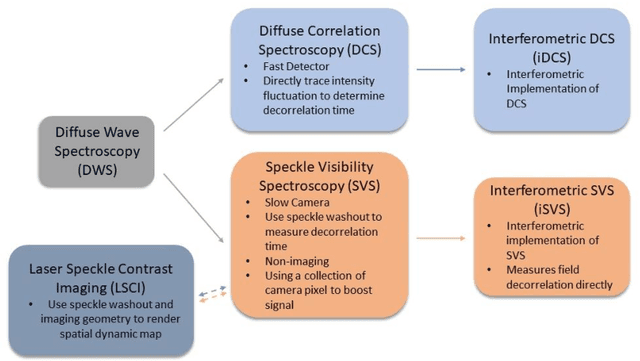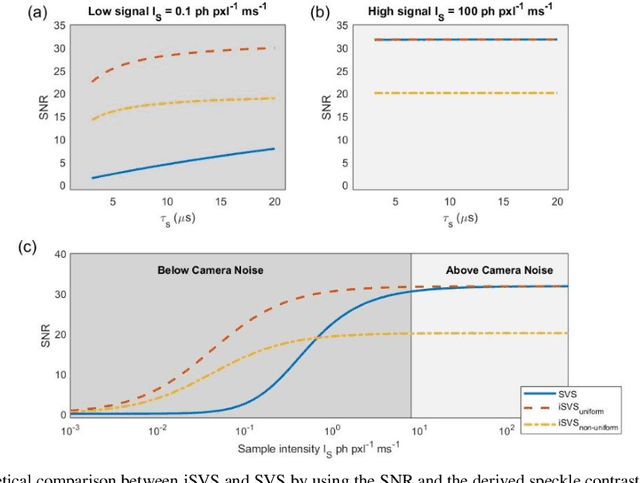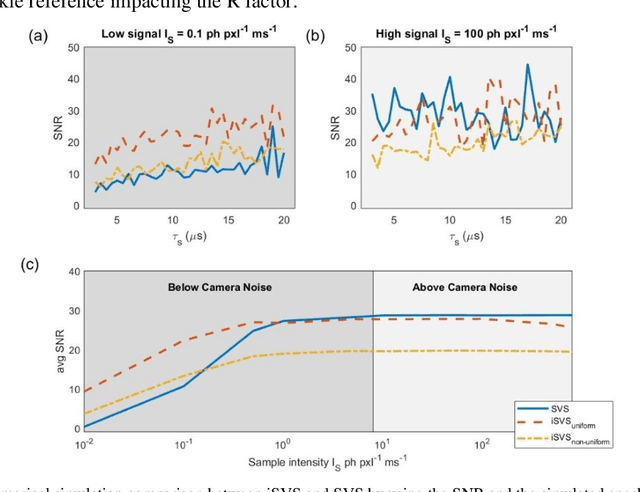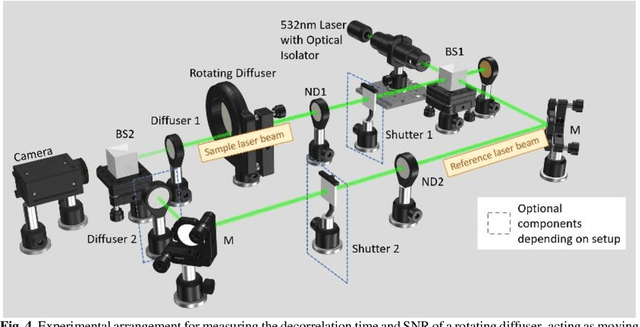Yu Xi Huang
Correlating Stroke Risk with Non-Invasive Tracing of Brain Blood Dynamic via a Portable Speckle Contrast Optical Spectroscopy Laser Device
Jul 23, 2024Abstract:Stroke poses a significant global health threat, with millions affected annually, leading to substantial morbidity and mortality. Current stroke risk assessment for the general population relies on markers such as demographics, blood tests, and comorbidities. A minimally invasive, clinically scalable, and cost-effective way to directly measure cerebral blood flow presents an opportunity. This opportunity has potential to positively impact effective stroke risk assessment prevention and intervention. Physiological changes in the cerebral vascular system, particularly in response to carbon dioxide level changes and oxygen deprivation, such as during breath-holding, can offer insights into stroke risk assessment. However, existing methods for measuring cerebral perfusion reserve, such as blood flow and blood volume changes, are limited by either invasiveness or impracticality. Here, we propose a transcranial approach using speckle contrast optical spectroscopy (SCOS) to non-invasively monitor regional changes in brain blood flow and volume during breath-holding. Our study, conducted on 50 individuals classified into two groups (low-risk and higher-risk for stroke), shows significant differences in blood dynamic changes during breath-holding between the two groups, providing physiological insights for stroke risk assessment using a non-invasive quantification paradigm. Given its cost-effectiveness, scalability, portability, and simplicity, this laser-centric tool has significant potential in enhancing the pre-screening of stroke and mitigating strokes in the general population through early diagnosis and intervention.
A compact and cost-effective laser-powered speckle visibility spectroscopy device for measuring cerebral blood flow
Jan 29, 2024



Abstract:In the realm of cerebrovascular monitoring, primary metrics typically include blood pressure, which influences cerebral blood flow (CBF) and is contingent upon vessel radius. Measuring CBF non-invasively poses a persistent challenge, primarily attributed to the difficulty of accessing and obtaining signal from the brain. This study aims to introduce a compact speckle visibility spectroscopy (SVS) device designed for non-invasive CBF measurements, offering cost-effectiveness and scalability while tracking CBF with remarkable sensitivity and temporal resolution. The wearable hardware has a modular design approach consisting solely of a laser diode as the source and a meticulously selected board camera as the detector. They both can be easily placed on the head of a subject to measure CBF with no additional optical elements. The SVS device can achieve a sampling rate of 80 Hz with minimal susceptibility to external disturbances. The device also achieves better SNR compared with traditional fiber-based SVS devices, capturing about 70 times more signal and showing superior stability and reproducibility. It is designed to be paired and distributed in multiple configurations around the head, and measure signals that exceed the quality of prior optical CBF measurement techniques. Given its cost-effectiveness, scalability, and simplicity, this laser-centric tool offers significant potential in advancing non-invasive cerebral monitoring technologies.
Interferometric speckle visibility spectroscopy (iSVS) for measuring decorrelation time and dynamics of moving samples with enhanced signal-to-noise ratio and relaxed reference requirements
Jun 30, 2023



Abstract:Diffusing wave spectroscopy (DWS) is a group of techniques used to measure the dynamics of a scattering medium in a non-invasive manner. DWS methods rely on detecting the speckle light field from the moving scattering media and measuring the speckle decorrelation time to quantify the scattering mediums dynamics. For DWS, the signal-to-noise (SNR) is determined by the ratio between measured decorrelation time to the standard error of the measurement. This SNR is often low in certain applications because of high noise variances and low signal intensity, especially in biological applications with restricted exposure and emission levels. To address this photon-limited signal-to-noise ratio problem, we investigated, theoretically and experimentally, the SNR of an interferometric speckle visibility spectroscopy (iSVS) compared to more traditional DWS methods. We found that iSVS can provide excellent SNR performance through its ability to overcome camera noise. We also proved iSVS system has more relaxed constraints on the reference beam properties than most other interferometric systems. For an iSVS to function properly, we simply require the reference beam to exhibit local temporal stability, while incident angle, reference phase, and intensity uniformity do not need to be constrained. This flexibility can potentially enable more unconventional iSVS implementation schemes.
 Add to Chrome
Add to Chrome Add to Firefox
Add to Firefox Add to Edge
Add to Edge